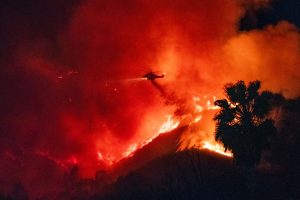. . . and claims they were “human-caused by <CO2-fueled> climate change.”
Robert W. Endlich
INTRODUCTION
This analysis examines the causes behind the catastrophic January 2025 fires in Los Angeles by exploring both environmental triggers and human failures that contributed to the disaster. There are two main parts to this analysis, which are described below.

Section A provides an analysis of the extant climate today, and the weather and fire events which unfolded in Los Angeles during the early days of January 2025.
The first of several catastrophic fires began and continued during an extremely powerful (and well-forecast) Santa Ana Wind event.
The analysis here reveals a diagnostic pattern for these types of fires found in the sea surface temperature time series in the Nino 3.4 Region along the Continue reading “Analysis of the January 2025 Los Angeles’ Wild Fires”
